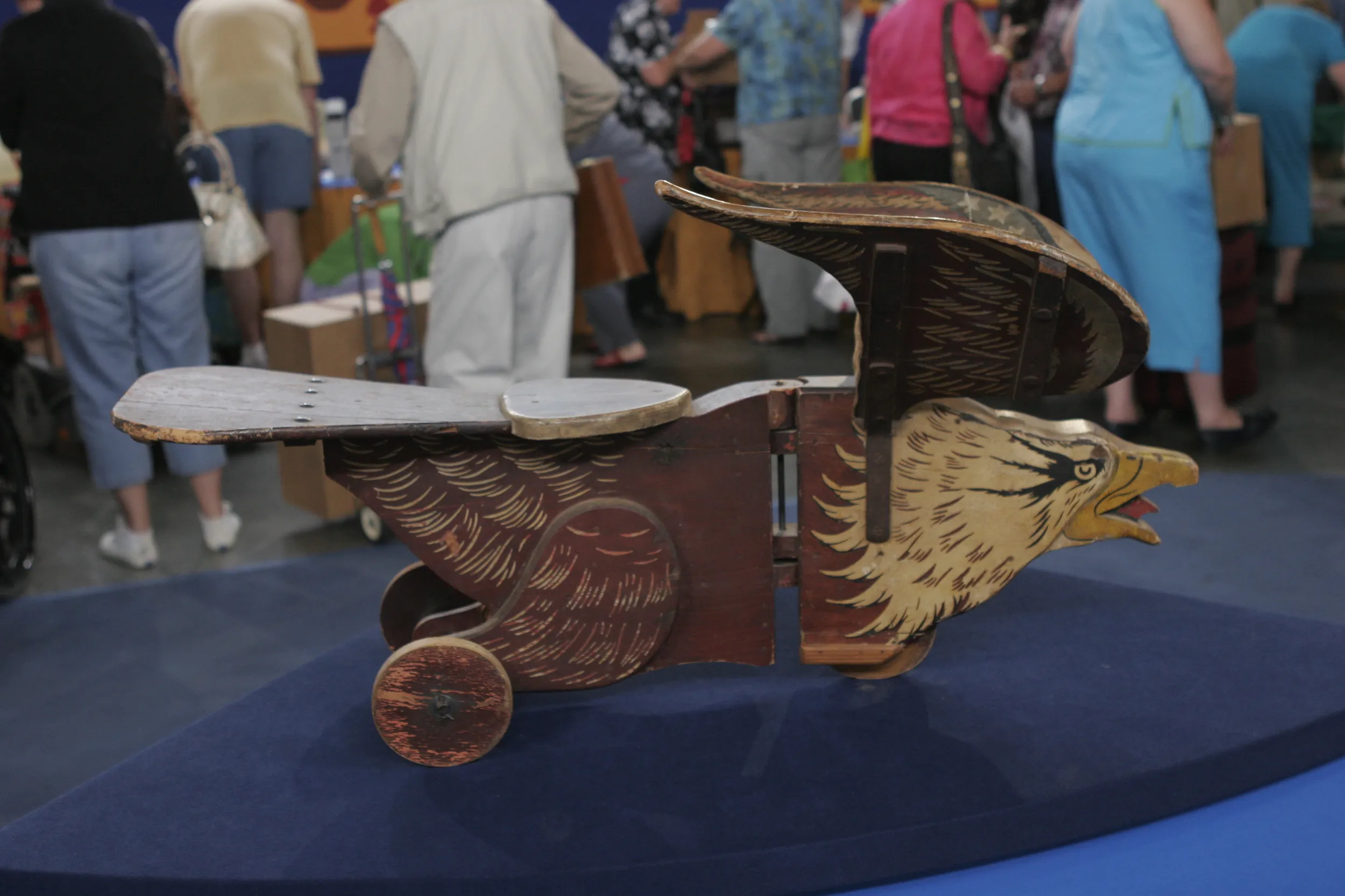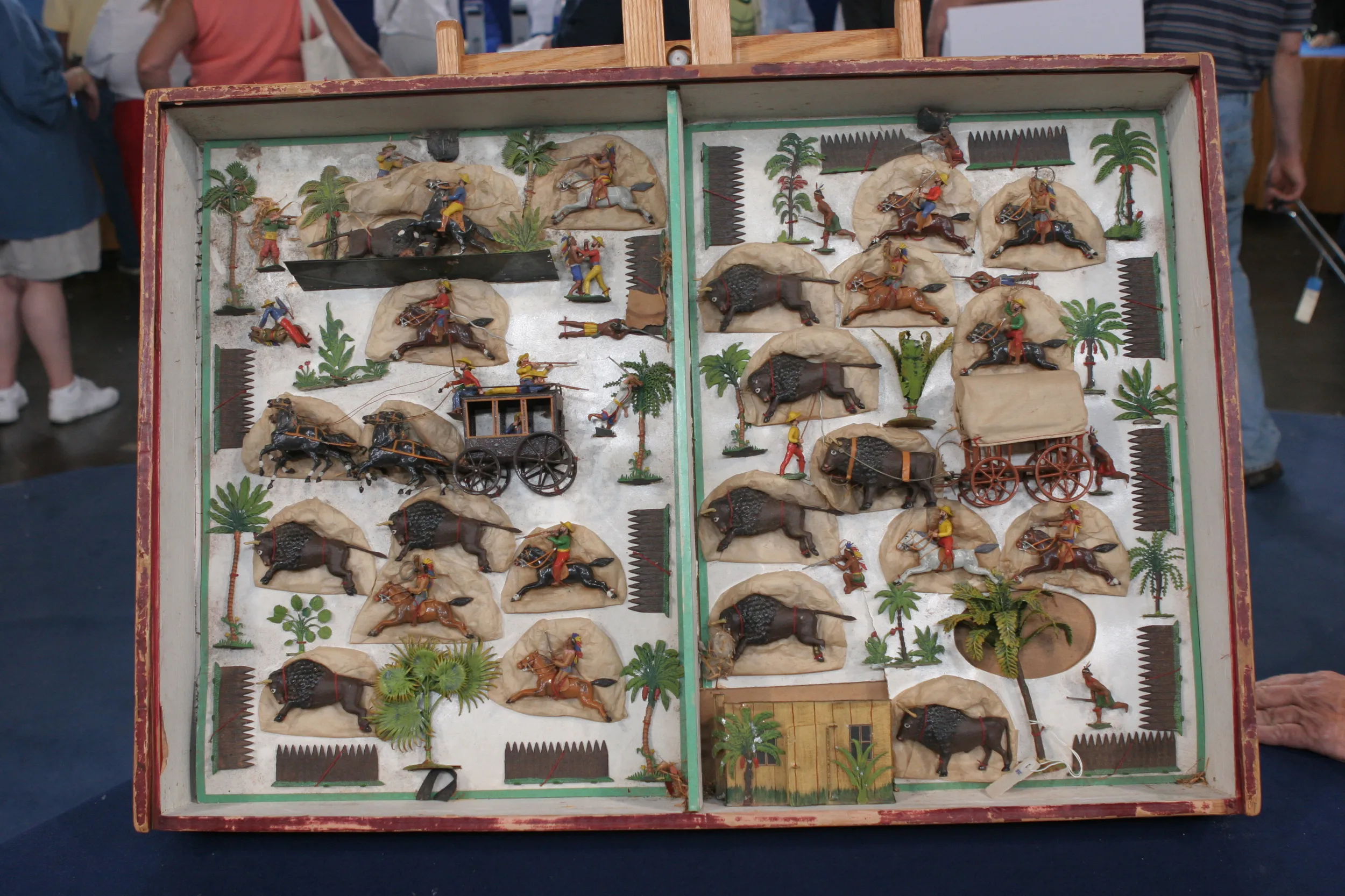Field Segment: Fly Fishing
HOST: Even though the Chinook salmon is the state fish of Oregon, today on the McKenzie River, we're trying to catch trout... the old-fashioned way, with antique bamboo rods. I hope you get one, buddy.
APPRAISER: I'm ready.
HOST: Many of Oregon's rivers attract anglers from around the world, and we thought this was the perfect opportunity to explore vintage fly fishing gear. Well, Ken, fishing with these antique rods is fun, but I understand you've got some real amazing rods and reels to take a look at on the bank.
APPRAISER: Yeah, we're going to get a look at a couple of the holy grails here in a minute.
HOST: The holy grails?
APPRAISER: Yeah, baby.
HOST: Very good, well, we better come with something because we got no fish. (laughter) Ken, people have been fly fishing for centuries, and while the technology certainly has advanced, the basics are still there. Rod, reel and something to keep the fish in if you're lucky enough to get them, and we have some classic examples here. Tell me about what you brought.
APPRAISER: Well, Mark, this is a Jim Payne split bamboo fly rod from the late 1930s, seven-and-a-half foot, and we've got all three of the original pieces here.
HOST: Now you say three original pieces, but it's a two-piece rod.
APPRAISER: Right. You get two tips when you bought it. The reason for that was so you'd have an extra one if you were out traveling and you broke one, then you'd have one to sub in with. It has a walnut heel on it, has a German silver ferrule on the end. Retail value on this rod today would be $4,000.
HOST: That's pretty expensive.
APPRAISER: Yes, it is.
HOST: Especially the way I cast. (laughter) Let's move over to this. This is a piece... boy, you see this in all the movies, but the modern fisherman doesn't use this much. Tell me about the creel.
APPRAISER: Well, the creel was carried while they were fishing, and they would line it with some wet ferns, or some type of plant material so that when they caught a fish, they would drop it down in the top. And what you really hoped for was that you got a big one, and you could lift the top up and drop him down in there. The great thing about this creel is it was made locally. Supposedly, one of the factory workers at McMonie's Saddle Upholstery makers was a fisherman. He fell on his creel and crushed it one day and came up with the idea of fitting it out with leather so that when you hit it on its stress points, it wouldn't break so easily, and it kind of took off from there. They didn't try to reinvent the wheel. They would order the baskets and then bring them here and retrofit them with the leather here in the factory. This particular one is so desirable because it's buck stitched with rawhide, which is much more difficult to do than using a linen stitch. If you're weaving a piece of linen in and out of all this, you're much less likely to break it than you would be if you're using leather. Another interesting aside on this creel, Mark, is that the name plate on the back of it is actually misspelled.
HOST: Is that right?
APPRAISER: Yeah. They didn't use "Mac", they used "Mc", but in order to change that, they would have had to reorder them and pay more money, so they decided to use them like they were.
HOST: So, McMonie's is spelled "MacMonie's" on this.
APPRAISER: MacMonie's.
GUEST: What year do you think this is from?
APPRAISER: This is from the 1920s. In today's market, retail, this creel would be $3,000.
HOST: Boy, it sure is beautiful. It's almost like a piece of folk art in itself, isn't it?
APPRAISER: Yeah, I could hang it on the wall.
HOST: You bet. And finally, let's talk about this reel that I know is valuable and I know that it's pretty old, but boy, oh boy, it looks like it's brand new out of the box.
APPRAISER: The thing about this reel, Mark, is that it is so unassuming looking. And it's like so many things from our past. The design is so simple and so classic, and the closer you get to it, the better it looks, it's so finally done. It's so rare because it's a Philbrook and Payne reel that was made when Payne worked for the Leonard Company, and it's the only one like this that's known to be marked with the Leonard name on it.
HOST: Now, you said Philbrook and Payne, so this Payne is as was the rod, but a different Payne.
APPRAISER: Well, the rod was made by Jim Payne, and the reel was made by his dad, Ed Payne.
HOST: I see. And what year was this reel made?
APPRAISER: That reel is from the late 1870s. Retail value on that would be $10,000.
HOST: Well, with all the money you'd spend on this fantastic collectible fishing equipment, it still doesn't help you get fish in the boat, does it?
APPRAISER: Nope, they don't care how fancy the equipment is.
HOST: You just got to know where to put the fly.
APPRAISER: Yep.

$17,000 Retail
Featured In
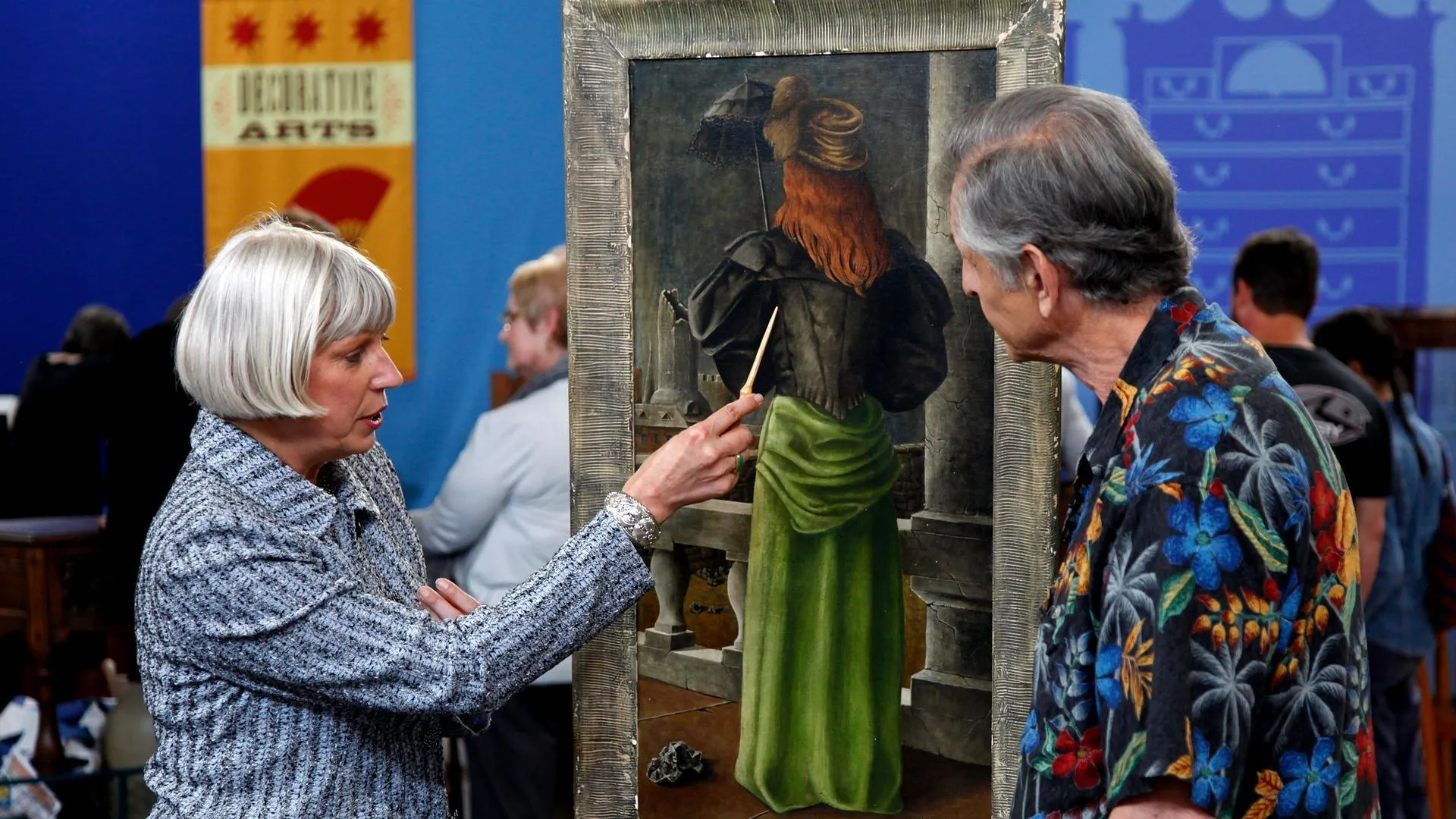
episode
Eugene, OR, Hour 1
ROADSHOW visits the McKenzie River for to look into the antique fly fishing gear market.
Nostalgic Collectibles
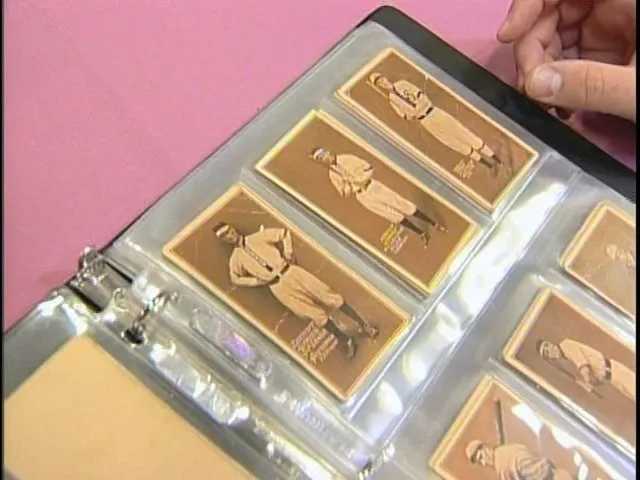
appraisal
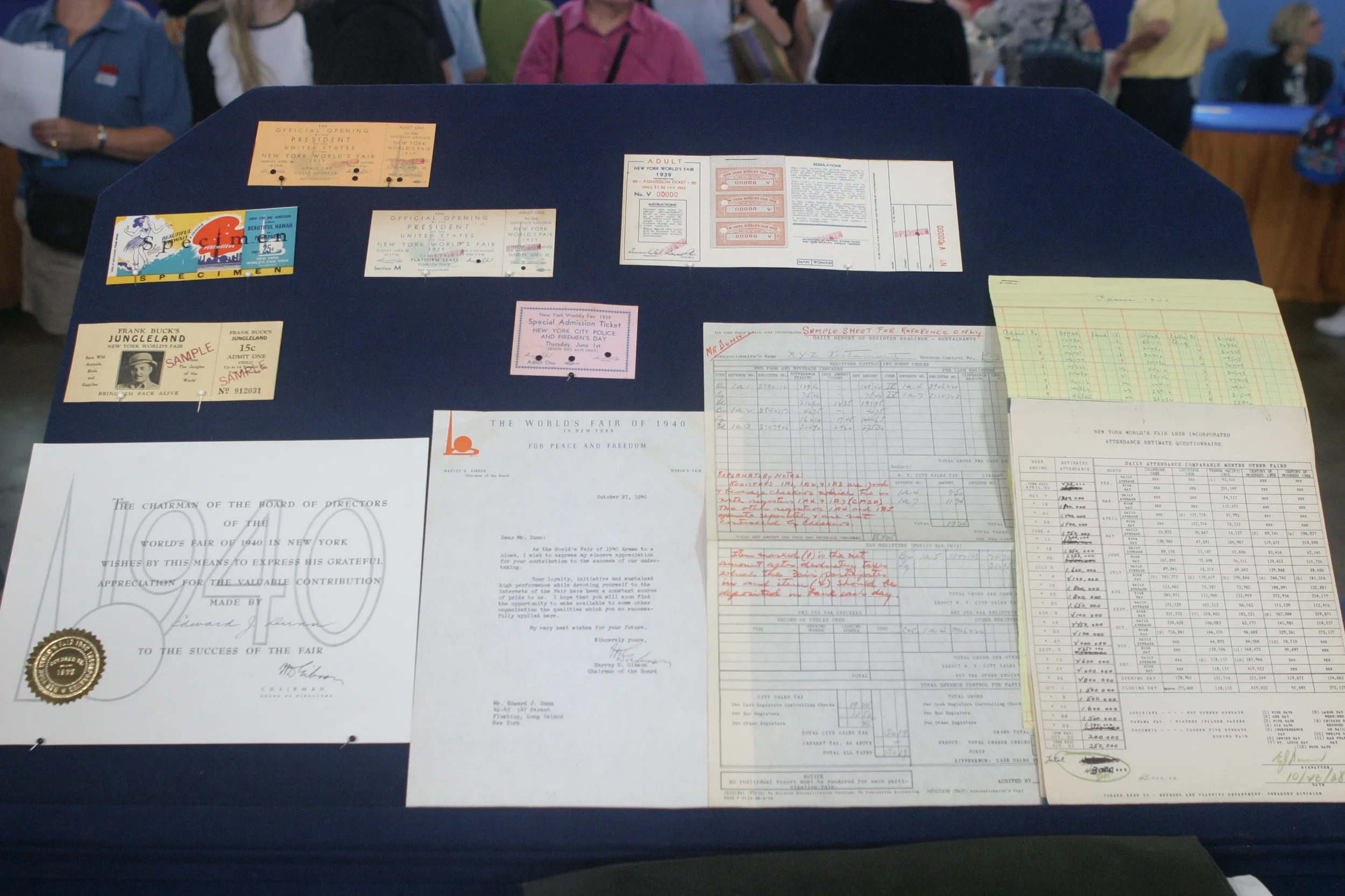
appraisal
Understanding Our Appraisals
Placeholder
